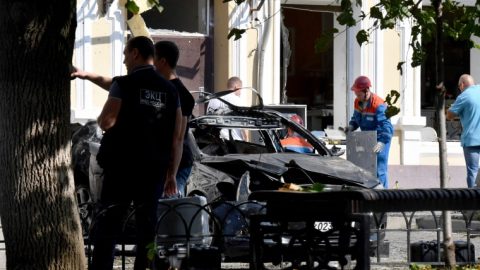“It is very exciting to see these finds and expose them to the public, finds which shed great light on our history,” Avi Cohen, CEO of the Ministry of Jerusalem and Heritage, said. “These finds are not just important to our own cultural heritage, but to that of the entire world.”
Other items include a cache of coins bearing Jewish symbols, including a harp and a date palm, arrowheads and spearheads, woven fabric, sandals and lice combs — all thought to date from the end of the Bar Kokhba Revolt (132-136 A.D.), in which Jews fought against Roman rule in Judea.
The treasures were found in what the Antiquities Authority called the “Cave of Horror” in the Judean Desert, which was discovered in 2017. The area’s unique dry climate means documents found there have survived in unusually good condition.
Using methods more likely to be seen in a Hollywood movie than in an archaeological project, researchers had to rappel down a precarious cliff face to reach the cave opening, which is 262 feet below a cliff top and flanked by gorges on either side. Drones were also used to survey hard-to-reach parts of caves.
The authority was keen to point out in its announcement Tuesday that accessing the cave is forbidden on safety grounds.
The remarkable discoveries were made during an Israeli project to prevent looting in the Holy Land, which experts says has been a constant threat to undiscovered artifacts since the first Dead Sea Scrolls discovery.
Antiquities Authority Director Israel Hasson, who launched the operation, urged the Israeli government to do more to protect other undiscovered treasures.
“The newly discovered scroll fragments are a wake-up call to the state. Resources must be allocated for the completion of this historically important operation,” he said.
“We must ensure that we recover all the data that has not yet been discovered in the caves, before the robbers do. Some things are beyond value.”
Paul Goldman contributed.










Recent Comments